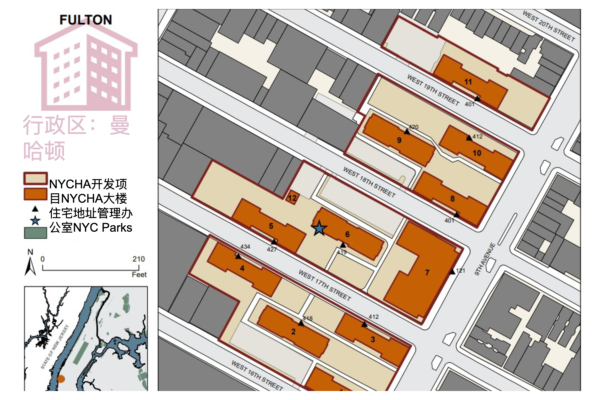The rising costs of a major government building renovation project in New York City, exacerbated by tariffs and currency inflation, have led to an estimated total investment of $1.9 billion, a 25% increase from the 2023 prediction. The project may continue to face escalating costs in the future.
The New York City Housing Authority (NYCHA) announced last October plans to undergo a comprehensive redevelopment of a total of 18 buildings in the Fulton Houses in Lower Manhattan and Chelsea-Elliot Houses. The project involves demolishing about 2,000 existing apartments and constructing 3,500 mixed-income housing units, including approximately 1,000 permanently affordable apartments and related facilities.
One of the main factors contributing to the rising costs of the project, as outlined in a presentation by Manhattan Community Board 4 last October, includes increases in construction material prices, asbestos and lead contamination remediation in demolition work, and increased financing costs. Recent reports from Crane indicate a rapid 4% increase in prices of iron and steel materials, with the Associated Builders and Contractors stating that due to the continued rise in building materials prices in the first two months of this year, construction costs for non-residential projects are climbing at an annual rate of 9%. This poses a significant challenge for the NYCHA, which requires up to $80 billion for repair funds.
To ensure the smooth progress of the project, the city government has partnered with The Related Companies, the developers of Hudson Yards, who have pledged $63 million to demolish old buildings and construct new residences. The remaining funds will be raised through tax credits, bonds, and long-term land leases.
The project heavily relies on federal subsidies, as well as funding from the city and state governments, and has attracted private developers to participate. Experts note that as these government buildings are located in some of the most valuable areas owned by NYCHA, if costs continue to rise, the city government can ensure sufficient funds through long-term land leasing.
Recent fluctuations in steel prices have been observed due to tariff impacts. The Associated Builders and Contractors analyze that tariffs have given domestic producers greater pricing power, leading to increased construction costs. However, some analysts suggest that the main reason for the soaring construction costs in recent years is not tariffs, but overall inflation.
Following a 40% increase in non-residential construction investment at the onset of the COVID-19 pandemic, spending has remained relatively stable since 2022. Although building material prices are trending upwards again, some material prices have actually fallen, even lower than pre-pandemic levels. The New York Building Congress anticipates a nearly 10% decrease in total city construction spending this year, down to $63 billion.
NYCHA emphasizes that the rising costs underscore the urgency for accelerating action on the project. The organization hopes that the renovation plans for the Fulton and Chelsea-Elliot houses will provide a replicable example for other affordable government building projects in New York City.
The final environmental review assessment of the project originally slated for completion in March 2025 is currently in the “public scoping phase” of the entire review process, according to information obtained from the city government.

